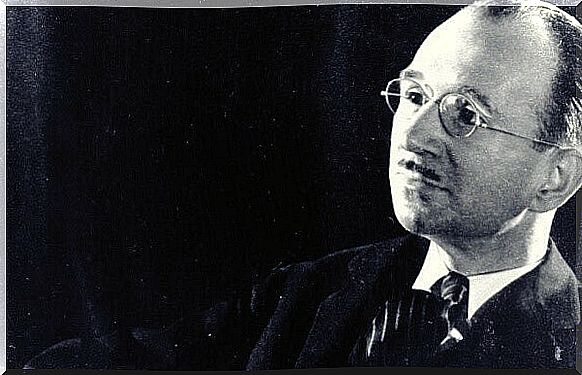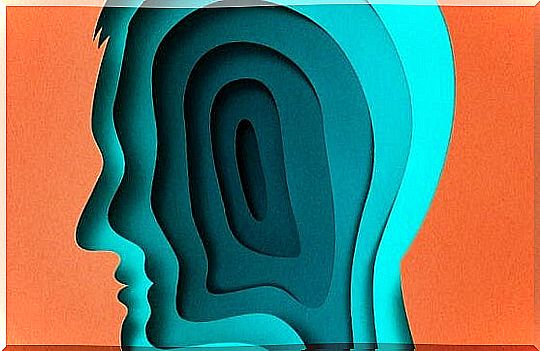Harry Stack Sullivan And Interpersonal Psychoanalysis

Harry Stack Sullivan was born in 1892 in the United States. This psychiatrist designed a variant of Freudian psychoanalysis. This variant is known as interpersonal psychoanalysis. Unlike the classical model, Sullivan built his theory on the basis of direct observation of his patients in consultation. Therefore, it is a more positivistic school.
Although Sullivan took the basic concepts of classical theory, his interpersonal psychoanalysis is more influenced by authors other than Sigmund Freud. Among his main references are Karen Horney, Erich Fromm and Erik Erikson.
The axis of the theory of interpersonal psychoanalysis is the conception of man as an eminently social being. Sullivan rejected any conceptualization that saw the human being as an isolated unit. Situations, environment and context are determining factors for this psychoanalyst.
Thus, interpersonal relationships play a decisive role. Such relationships can have real or imaginary elements. In both cases they are decisive. It is these links that shape the personality and give the individual a specific identity.
Interpersonal psychoanalysis and its theory of personality
For Harry Sullivan, personality is a construction. It is formed from interpersonal relationships. These determine a specific way of processing physiological and social impulses. It is made up of three basic elements: dynamisms and needs, the ego system, and personifications.

Let’s look at each of these elements of the personality of interpersonal psychoanalysis, in greater detail:
- Dynamisms and needs. Sullivan indicates that there are two large groups of human needs: self-satisfaction and security. The former are physiological, while the latter are more psychological. Dynamisms, on the other hand, are patterns of behavior that are developed to satisfy both groups of needs.
- The system of the self. According to interpersonal psychoanalysis, the ego system is a psychic structure that develops during childhood. Their role is to manage security needs, alleviating anxiety and protecting self-esteem and social image.
- Personifications. It corresponds to the set of characteristics, real and fictitious, that children attribute to people and human groups. These also define the characteristics of their interpersonal relationships throughout life.
Types of experience
Interpersonal psychoanalysis suggests that there are different ways of experiencing the physical and social environment that change over time. They are modified according to the command of the language and the degree of satisfaction of the needs that is achieved.
For Sullivan there are three types of experience: prototaxic, parataxic, and syntactic. Let’s see each one of them:
- Prototaxic experience. It refers to all the experiences that take place before the person is able to symbolize reality. That is, before the appearance of language. The baby does not have a sense of time, nor does it understand causality. Little by little he becomes aware of his body and its component parts. Learn to recognize feelings of tension and relief.
- Parataxic experience. It refers to experiences that include private and autistic symbols or with exclusively their own meaning. It implies knowledge about how to obtain satisfaction for one’s own needs. It occurs at an early age, but it can resurface in adult life. Interpersonal psychoanalysis calls this resurgence “parataxic distortion.”
- Syntactic experience. It has to do with the experience of communication with the other and appears when the development of the personality is healthy. The human being can communicate through symbols, preferably language. It is the product of logical and sequential thinking. Syntactic experiences allow the individual to be part of a society

Anxiety in Sullivan’s theory
In the framework of interpersonal psychoanalysis, anxiety is the most destructive force in relationships with others. It indicates that it originates from the dependence that the child experiences towards his mother. This dependence is healthy in principle, but if there is a disturbance in the mother or in the source of dependence, anxiety arises. A tension for which there is no relief.
Perhaps this is better understood with an example. During breastfeeding, the child may have a disturbing experience with his mother’s breast. Likewise, he may perceive that she is upset for reasons he does not understand. Both experiences would cause anxiety.
Later, anxiety gives rise to dysfunctional behaviors such as night terrors, phobias or other types of anxious behaviors. It is also possible that a global fear of living develops. It is then that development stagnates or becomes distorted.

Interpersonal psychoanalysis has had some impact on psychology and also on psychiatry. In fact, it is one of the schools that treats pathologies considered very severe, such as schizophrenia. Several of Sullivan’s concepts continue to be applied in various forms of psychotherapy.









